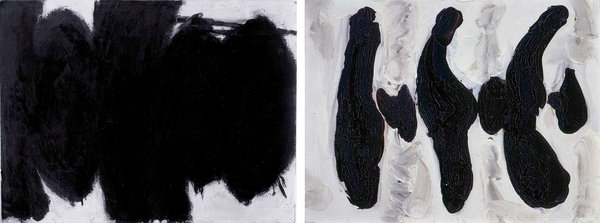
NEARLY 17 years ago Glafira Rosales, a little-known art dealer from Long Island, walked into Knoedler & Company’s grand Upper East Side town house with a painting she said was by Mark Rothko.
She showed the small board with two clouds of bruised color floating against a backdrop of pale peach to Ann Freedman, the new president of Knoedler, New York’s oldest art gallery.
“It was immediately, from my eyes, a work of interest,” Ms. Freedman recalled later. She was so impressed that she ended up buying the work herself.
For the next decade or so Ms. Rosales frequently arrived at Knoedler’s coffered-ceiling mansion on East 70th Street with what appeared to be paintings by Modernist masters like Jackson Pollock, Willem de Kooning and Robert Motherwell.
All of them were new to the market. All were said to have come from a collector whom Ms. Rosales refused to name.
The paintings were embraced by Knoedler and Ms. Freedman, who handled at least 20 of them, including one she sold for $17 million.
But now several experts have called the works fakes. One has been formally branded a forgery in a court settlement, and the F.B.I. is investigating. Knoedler, after 165 years in business, has shut its doors and is being sued by a client who bought one of the Rosales works. (The gallery said the closing was a business decision unconnected to the lawsuit.) Ms. Freedman, who maintains that the paintings are authentic, was also named in the suit.
Few cases in recent years have roiled the art market as much as this mystery of how an obscure art merchant could have discovered an astonishing number of unknown treasures by the titans of Abstract Expressionism. Each explanation carries its own burden of implausibility.
If they are real, why do some contain pigments that had not been invented at the listed time of their creation?
If they are fakes, who are these preternaturally talented forgers who have been able to confound experts?
And if they are real but stolen, why haven’t their owners come forward to claim them now that the story is public?
Unfortunately the one person who could help unravel the mystery, Ms. Rosales, is not talking, at least publicly. A few details, however, have dripped out in court documents and through interviews with other players in the case, enough to sketch out what happened. Charming and cultured, the Mexican-born Ms. Rosales, 55, and her husband, Jose Carlos Bergantiños Diaz, who is from Spain, once operated a small gallery, King Fine Arts, in Manhattan on West 19th Street. The couple, who had accounts at Sotheby’s and Christie’s, have said in court papers that they owned or sold paintings by a host of famous artists, including Andy Warhol, whom Mr. Bergantiños has described as a friend.
Given this experience, it may seem odd that Ms. Rosales would have bothered with middlemen like Knoedler, whose commissions sliced into her own. Part of the answer may lie in the gap between Ms. Rosales’s and Ms. Freedman’s stature in the art world.
Tall, rail-thin and self-assured, Ms. Freedman was in charge of one of the country’s most venerable galleries, comfortable lunching with top-tier collectors like the producer David Geffen and the heiress Joan Tisch, buyers who would not blanch at the thought of plunking down a few million for a painting. She and her husband, the real estate developer Robert Freedman, were also collectors in their own right.
The two women were introduced by a Knoedler employee, Jaime Andrade, who had met Ms. Rosales at a cocktail party.
At first, Ms. Freedman said, Ms. Rosales told her only that she was handling the paintings for a friend who had homes in Mexico City and Zurich, and whose identity she had sworn to keep secret. That wasn’t surprising, Ms. Freedman said; private collectors frequently like to remain anonymous. Over time, though, more details about the owner dribbled out. Ms. Rosales told her that he had inherited the art from his father, who had collected it with the help of David Herbert, a New York dealer who died in 1995.
Herbert planned to use the works to stock a new gallery that was to be financed by the original collector. But the two men had a falling out, and the art ended up in the collector’s basement until his death.
Originally posted 2016-02-23 00:27:53. Republished by Blog Post Promoter

![stolen-art[1]](https://coolinterestingnews.com/wp-content/uploads/2012/02/stolen-art1.jpg)












